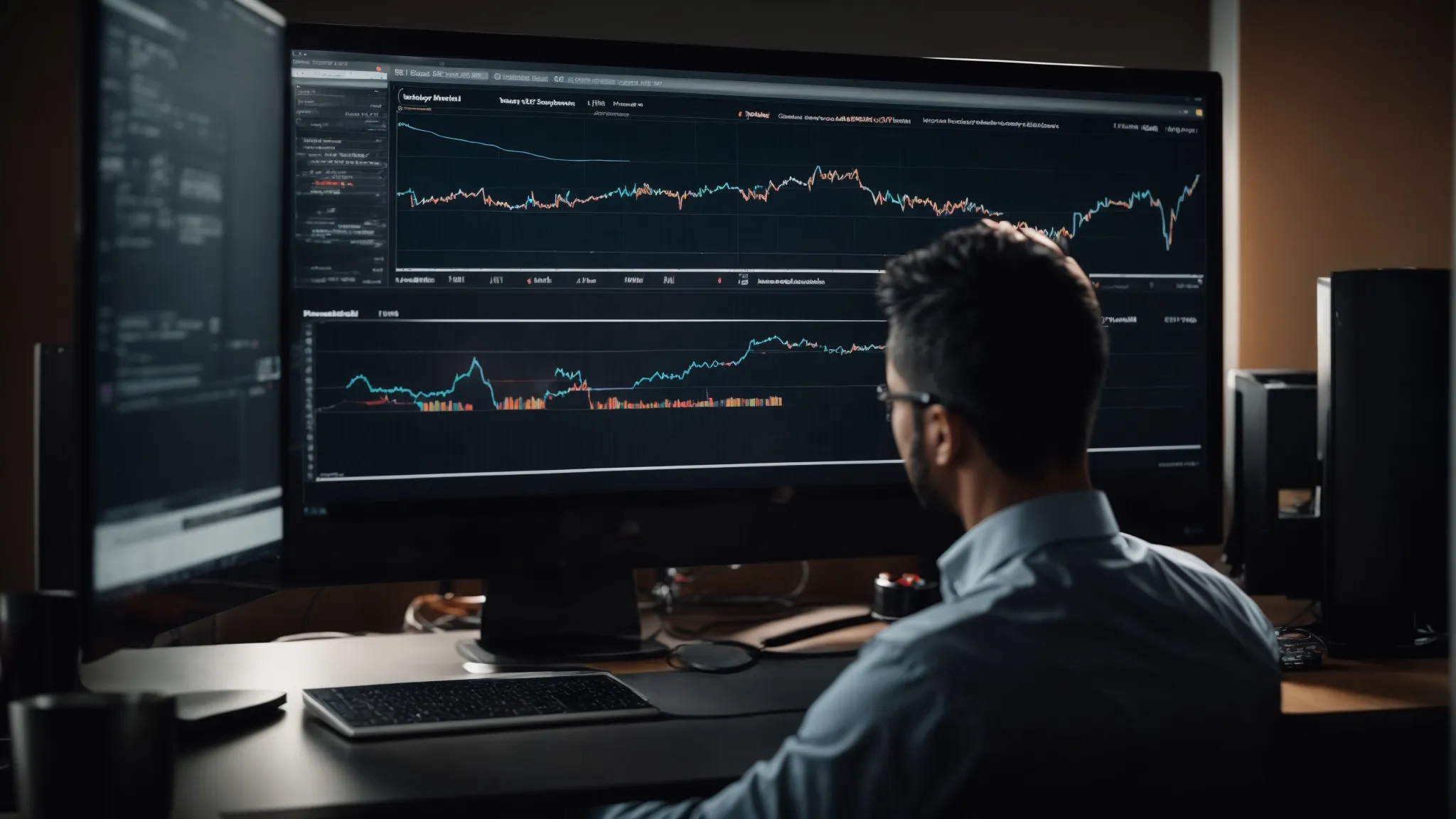State of Digital Marketing 2016: SEJ Report
State of Digital Marketing 2016: Insights From SEJ Report The digital marketing landscape of 2016 was marked by significant evolutions, as shown by the comprehensive report published […]
State of Digital Marketing 2016: Insights From SEJ Report
The digital marketing landscape of 2016 was marked by significant evolutions, as shown by the comprehensive report published by Search Engine Journal (SEJ).
From emerging SEO tactics to the explosion of content marketing, professionals across the industry have had to adapt to rapid changes and integrate new strategies into their marketing mix.
Social media continued its ascent, carving deeper niches for engagement, while PPC advertising and email marketing refined their approaches for targeted outreach.
This article delves into the details and data that have shaped the digital marketing realm over the past year, offering insights and takeaways critical for any marketing strategy.
Keep reading to uncover the pivotal developments that have set the stage for future digital marketing innovations.
Key Takeaways
- Mobile Optimization Became Essential for Engaging Customers Effectively in 2016
- Video Content and Storytelling Were Pivotal Factors in Captivating Digital Marketing Audiences
- A Focus on User Experience Significantly Impacted Conversion Rates and Customer Loyalty
- Influencer Marketing Emerged as a Key Strategy for Authentic Brand Messaging
- Precise Targeting Through Long-Tail Keywords and Local SEO Strategies Drove Conversions
Unveiling the Top Digital Marketing Trends in 2016

The digital marketing landscape in 2016 experienced pivotal shifts that underscore the evolving nature of the industry.
With mobile devices becoming ubiquitous, businesses placed greater emphasis on mobile optimization to ensure a seamless user experience—acknowledging its indispensable role in engaging customers effectively.
Concurrently, video content began carving a significant niche within marketing strategies, as brands harnessed its potential to captivate audiences with compelling storytelling.
Furthermore, the focus on user experience took center stage, with companies recognizing its critical impact on conversion rates and customer loyalty.
Within this dynamic, influencer marketing also emerged as a key facet in 2016, amplifying brand messages through the voices of trusted and authoritative figures in social spaces.
Shift Towards Mobile Optimization and Its Impact
The year 2016 marked a watershed moment for digital marketing, as companies realized the indispensable nature of mobile optimization in their marketing arsenals. The rise of smartphones as the primary device for internet access prompted businesses to refine their web properties, ensuring that their interfaces intuitively adapted to smaller screens and touch-based navigation.
This transformative period saw improved mobile-optimized web designs directly correlating with increased customer engagement and conversions, signifying a matured understanding of mobile’s role in the digital journey. Brands that expertly navigated the mobile-first approach found themselves at a distinct advantage in capturing the ever-mobile audience, thereby cementing mobile optimization as a cornerstone of contemporary digital marketing strategies.
The Rise of Video Content in Marketing Strategy
The evolution of digital marketing in 2016 was markedly influenced by the burgeoning prominence of video content. This trend was propelled by the user’s preference for engaging, dynamic visuals over text-based information, offering a potent platform for brands to tell their stories.
Video content not only added a layer of depth to digital marketing strategies but also showed an increased return on investment for marketers who leveraged this medium. Integrating video into marketing tactics allowed for a more interactive and personal connection with audiences:
- Captivating storytelling through video led to higher audience retention rates.
- Strategic placement of video content improved SEO rankings as viewer engagement metrics soared.
- Brands witnessed substantial growth in social sharing, expanding their reach organically through video marketing.
Importance of User Experience in Digital Strategies
The focus on user experience (UX) within digital marketing initiatives became increasingly pronounced in 2016. With competition intensifying online, businesses recognized that UX was more than just aesthetic design; it was about crafting an intuitive and frictionless path for users to achieve their goals.
In this new digital era, user-centric design principles led to marketing strategies that prioritized ease of use, accessibility, and enjoyable interactions. Creating an exceptional UX elevated a company’s brand, fostered customer trust, and ultimately drove successful conversions.
- UX improvements increased customer satisfaction and built brand loyalty.
- Attention to accessibility expanded market reach to include users with diverse abilities.
- Intuitive design streamlined the customer journey, optimizing the path to conversion.
Influencer Marketing’s Role This Year
In 2016, influencer marketing took center stage, transforming how brands interact with their audience. By partnering with figures who boast substantial and engaged followings, companies were able to tap into a vein of authenticity and trust that traditional advertising channels often struggle to achieve.
This year, as noted by the Search Engine Journal, such collaborations proved more than fleeting endorsements—strategic influencer partnerships offered brands a robust tool for not only amplifying their messaging but also for forging lasting connections with consumers aligned with the influencer’s niche.
SEO Tactics That Dominated 2016

In 2016, search engine optimization (SEO) continued to be an essential element of the digital marketing mix, with specific strategies taking the lead in shaping online presence for businesses.
Industry giants such as Search Engine Journal highlighted the increased reliance on nuanced SEO techniques, noting the strategic employment of long-tail keywords as a path to tap into highly targeted search queries.
Additionally, local SEO gained traction, becoming crucial for businesses seeking to dominate local search results and connect with community-based customers.
Alongside these developments, the time-tested practice of building a robust backlink profile maintained its role as a staple in digital marketing, confirming the enduring importance of link equity in ranking well within search engine results.
These elements, crucial in the ever-evolving digital landscape, reinforced SEO as a powerful lever in effective digital marketing campaigns.
Understanding the Power of Long-Tail Keywords
In 2016, digital marketers recognized the profound effect that long-tail keywords had on search engine optimization efforts. These keywords, which are more specific and often longer phrases used by searchers, align closely with user intent and are less competitive than their shorter counterparts.
The strategic use of long-tail keywords allowed businesses to cater content to niche demographics, yielding higher conversion rates. With precise alignment to searcher queries, such targeted content elevated its authority and relevancy in the eyes of search engines:
- Content crafted around long-tail keywords drove more qualified traffic to websites.
- These keywords typically resulted in better search rankings as they faced less competition.
- Conversions increased due to the specificity of user intent that long-tail keywords captured.
Local SEO and Its Growing Significance in 2016
In 2016, the terrain of digital marketing witnessed the ascent of local SEO as a formidable force, a trend underscored by the Search Engine Journal’s thorough analysis. Businesses discovered the Untapped Potential of Optimizing for local search, recognizing that local visibility was not merely an option but a necessity for sustaining relevance and competitive advantage in an increasingly localized market.
Subsequently, companies began investing more resources into enhancing their local SEO strategies, tailoring their online presence to capture the attention of geo-specific search queries. This focus on location-based optimization was pivotal in directing foot traffic to brick-and-mortar establishments and in cementing the authority of businesses within their respective local landscapes.
The Continuous Relevance of Backlinking Strategies
In the dynamic world of digital marketing, 2016 reaffirmed the importance of backlinking strategies within SEO efforts. Harnessing the power of quality backlinks remained a critical factor for businesses aiming to enhance their domain authority and improve their rankings on search engine result pages.
LinkGraph tools and SearchAtlas SEO software emerged as sophisticated solutions for companies seeking to refine their link-building initiatives. By providing comprehensive SEO audits and facilitating the development of white label link-building services, these tools played a significant role in streamlining the process of acquiring valuable links and charting a path for sustained digital growth.
The Proliferation of Content Marketing in 2016

In 2016, the digital marketing domain continued its rapid expansion as businesses across the globe allocated more resources to online channels.
The Search Engine Journal shed light on this proliferation, particularly highlighting the elemental role of content marketing in attracting, engaging, and retaining customers.
Despite the advent of numerous novel marketing methodologies, content held its throne, undeniably powerful in influencing consumer behavior.
Businesses harnessed diverse content forms to fortify engagement and drive conversions, while staying attuned to emerging content types that offered fresh ways to resonate with the audience.
This period marked a transformative epoch, where the intertwining of creativity and strategy defined the contours of a brand’s digital footprint.
Why Content Is Still King in Digital Marketing
In the intricate tapestry of digital marketing, content continued to reign supreme in 2016, consistently driving the narrative of brand-consumer interactions. As both a vector for sculpting online presence and an engine propelling search engine rankings, content’s dominion was undiminished.
Marketers harnessed content not only as a tool for engagement but also as a subtle maestro of SEO efforts, steering traffic and fostering credibility. Robust content strategies translated to digital viability and influence:
- Diverse formats engaged different segments of the audience, creating a full-bodied brand experience.
- High-quality, relevant content bolstered SEO rankings, underscoring the synergy between valuable content and search engine visibility.
- The strategic dissemination of content through various channels maximized reach and heightened brand authority.
Utilizing Content to Drive Engagement and Conversions
In the digital marketing realm of 2016, content emerged as a cardinal driver for businesses keen on bolstering customer engagement and achieving higher conversion rates. By crafting relevant and compelling narratives, companies were able to spark meaningful interactions, nudging potential clients through the sales funnel with greater efficiency.
Strategic content creation, underpinned by the insights drawn from SearchAtlas SEO software, enabled marketers to tailor their message for the ideal customer journey. This personalized approach not only resonated deeply with target audiences but also significantly enhanced the likelihood of converting site visitors into loyal customers.
The Emergence of Innovative Content Types
In 2016, the digital marketing sphere observed a surge in the uptake of innovative content types that transcended traditional formats. The progression was marked by the infusion of virtual reality (VR) experiences, interactive infographics, and live streaming sessions, which allowed brands to immerse their audience in unique and memorable brand narratives.
With these innovative content mediums, companies endowed their digital strategies with an element of differentiation that captured audience interest in an increasingly cluttered online space. The strategic incorporation of such novel content by businesses, facilitated by tools like SearchAtlas SEO software, not only engaged consumers but also offered fresh perspectives on consumer-brand interactions.
Social Media Marketing: A Year in Review

In 2016, the social media landscape witnessed phenomenal changes that both seasoned digital marketers and burgeoning enterprises could not afford to ignore.
With the Search Engine Journal casting a detailed lens on the ebb and flow of platform dominance, businesses gleaned valuable insights into which social networks wielded the most influence over consumer audiences.
Brands were compelled to scrutinize advertising budgets as social media continued to consume a larger slice of marketing spends, necessitating astute financial strategizing.
Within the broader digital marketing ecosystem, the strategic integration of social media channels became ever more critical.
This integration provided avenues for content dissemination, brand awareness, customer interaction, and the fortification of overall digital strategies.
It was clear that understanding the nuances of social media’s role would be pivotal to navigating the digital currents of 2016.
Insights Into the Most Successful Social Platforms
In 2016, the digital marketing sphere witnessed some social platforms excelling by offering superior engagement opportunities and refined advertising tools to brands. The information shared by Search Engine Journal pointed to specific networks that stood out, attributable to their user-friendly interfaces and sophisticated analytics, enabling businesses to target and connect with their audiences effectively.
Facebook and Instagram, in particular, dominated among social platforms by implementing algorithm changes that emphasized content quality and relevance, thus benefiting businesses with agile social media marketing strategies. As social media’s influence on digital marketing strategies grew, these platforms became essential assets for companies aiming to enhance their reach and cultivate a loyal customer base:
- Facebook catered to a diverse demographic, leading digital marketing channel utilization.
- Instagram’s visual-centric platform surged in popularity, especially among younger consumers.
Analyzing Trends in Social Media Advertising Spends
In 2016, the fabric of social media advertising underwent a significant transformation, marking financial reallocations within digital marketing budgets from conventional methods towards more interactive platforms. According to insights by the Search Engine Journal, companies increasingly funneled their marketing dollars into social platforms, capitalizing on the sophisticated targeting capabilities and broad reach offered by the likes of Facebook, Instagram, and Twitter.
This reallocation reflected a deeper recognition of social media’s powerful role in consumer engagement and brand-building initiatives. The advertising spend trends observed by digital marketing professionals indicated a strategic pivot where businesses not only sought to increase visibility but also aspired to enhance consumer experiences and foster meaningful connections through social media campaigns.
The Role of Social Media in Overall Digital Strategy
In 2016, social media’s integration into the overall digital strategy solidified, becoming more than just a platform for casual interactions; it evolved into a critical space for brands to amplify their voice and engage with their audience. This strategic pivot recognized social channels as instrumental in shaping consumer opinions, reinforcing brand image, and driving targeted traffic to digital properties.
With digital marketers emphasizing on the synergy between social media and other facets of the digital strategy, the year saw a concerted effort to optimize social media’s potential. Social channels worked in tandem with search engine optimization and content marketing efforts, effectively broadening a brand’s reach and deepening its impact on the consumer journey:
| Social Platform | Strategy Enhancement | Marketing Impact |
|---|---|---|
| Audience Targeting | Increased Brand Visibility | |
| Real-time Engagement | Improved Consumer Relations | |
| Visual Storytelling | Heightened User Interaction | |
| Professional Networking | Enhanced B2B Relationships |
Pay-Per-Click (PPC) Advertising Developments

As the digital marketing ecosystem continued to flourish in 2016, the Pay-Per-Click (PPC) advertising space experienced significant transformations that realigned strategies and outcomes for digital marketers.
The Search Engine Journal’s comprehensive report delved into the year’s PPC advancements, noting that Google AdWords’ platform changes significantly influenced the PPC landscape.
Innovations in automation technology shifted the approach towards PPC management, allowing for more efficient campaign operations.
Moreover, marketers who employed advanced targeting strategies found themselves leading the pack, achieving superior performance by reaching audiences with heightened precision.
This introspective look into PPC advertising developments underscores the evolving nature of digital marketing, characterized by an increasing reliance on data-driven decisions and technological advancements.
AdWords Changes and Their Effects on PPC
In 2016, Google AdWords underwent significant changes that impacted PPC campaigns across the board. These updates introduced more sophisticated ad formats, tighter controls over ad extensions, and improvements to the advertising platform’s user interface, all to provide advertisers with refined tools for their marketing endeavors.
The alterations in AdWords functionality afforded businesses with the means to enhance ad visibility and interaction. With this evolution, advertisers could now benefit from more granular bidding options and improved targeting for greater ROI on their ad spend.
| AdWords Update | PPC Impact |
|---|---|
| Refined Ad Formats | Increased Click-Through Rates |
| Enhanced Targeting Options | Improved Ad Relevance & Conversions |
| Advanced Bidding Features | Optimized Ad Spend Efficiency |
| UI Improvements | Simplified Campaign Management |
The Shift Towards PPC Automation
The digital marketing sector witnessed a Transformative Adoption of Automation in Pay-Per-Click campaigns throughout 2016. Embracing automation platforms, advertisers optimized their PPC efforts with unprecedented precision and efficiency, setting new standards for ROI and streamlined campaign management.
This shift reinforced the strategic movement towards data-centric advertising models, allowing for real-time adjustments in bidding strategies and ad placement. The inclusion of automation tools in PPC not only revolutionized the scalability of campaigns but also furnished marketers with analytical insights necessary for informed decision-making.
PPC Targeting Strategies That Outperformed Others
In the ever-evolving realm of Pay-Per-Click advertising, 2016 saw standout performance from marketers who adopted precise and Sophisticated Targeting Strategies. By meticulously segmenting audiences and customizing ads to match the specifics of user behavior and preferences, businesses not only maximized their PPC campaign effectiveness but also ensured a higher conversion rate.
Furthermore, those who leveraged the capabilities of LinkGraph tools for granular data analysis and audience insights were able to optimize their PPC efforts with greater ad placement accuracy. The strategic application of these insights through SearchAtlas SEO software enabled advertisers to tailor their campaigns to the right audience at the optimal time, significantly boosting campaign performance in the competitive digital landscape of 2016.
Email Marketing: Harnessing the Power of Personalization

In 2016, the digital marketing narrative emphasized personalization as a vital component of email marketing, as revealed in the Search Engine Journal’s comprehensive analyses.
Digital marketers recognized that nuanced adjustments to email correspondence directly affected click-through rates, driving the need for more sophisticated customization techniques.
Mobile-responsiveness became non-negotiable, considering the prevalence of consumers accessing their inbox on-the-go.
In parallel, the art of email segmentation matured, granting businesses a sharper tool for targeting, which resulted in profound engagement and conversion results.
This introduction to the year’s email marketing trends paves the way for a deeper understanding of practices that shaped effective communication in the digital space.
Email Customization Techniques That Improved CTR
In 2016, the digital marketing community observed a significant uplift in click-through rates (CTRs) when Email Marketing Campaigns Employed Advanced Personalization techniques. Tailored subject lines, which utilized data such as the recipient’s name, past purchase history or location, transformed emails from generic broadcasts to personal conversations, heightening the recipient’s propensity to engage.
Moreover, dynamic content within the emails themselves, which changed based on user behavior or demographic data, proved to be a potent tool in improving CTRs. This form of customization delivered highly relevant offers and content to each individual, fostering a sense of value and urgency that compelled recipients to act.
The Importance of Mobile-Responsive Email Designs
In 2016, a trend analysis by Search Engine Journal revealed email marketing’s crucial pivot toward mobile-responsive design, as an escalating number of consumers accessed their inboxes via mobile devices. The urgency for businesses to adopt mobile-friendly email formats couldn’t be overstated, with consumer preference leaning towards brands that offered an optimal reading experience across various screen sizes.
Brands adept in Aligning Their Email Marketing Practices with mobile responsiveness observed enhanced user engagement and increased click-through rates. This pronounced shift validated mobile-responsive designs not only as a best practice but as a fundamental standard for companies striving to maintain relevance in a digital landscape dominated by mobile browsing.
Insights Into Email Segmentation for Better Targeting
In the dynamic terrain of digital marketing, 2016 bore witness to the Strategic Refinement of Email Segmentation, elevating marketing campaigns to unprecedented levels of customization and relevance. This targeted approach, dissecting mailing lists into specific groups based on demographics, purchase history, or subscriber activity, empowered brands to deliver content that resonated more intimately with their audiences.
Email segmentation thus emerged as a cornerstone of personalized marketing, allowing businesses to hone their messaging for distinct subsets of their customer base. This could translate into higher engagement rates and an uptick in conversions, showcasing the potency of a well-implemented segmentation strategy within a brand’s comprehensive marketing toolbox.
Conclusion
In conclusion, the State of Digital Marketing 2016, as highlighted in the SEJ report, marked a transformative year with several significant trends shaping the future of the industry.
Mobile optimization became crucial, as businesses adapted to the increasing prevalence of smartphones, enhancing customer engagement and conversions.
Video content rose to prominence within marketing strategies, captivating audiences and boosting social sharing and SEO rankings.
Moreover, a focus on user experience emerged as paramount, directly influencing customer loyalty and conversion rates.
Influencer marketing gained momentum, connecting brands with consumers through authentic voices.
SEO tactics evolved, with long-tail keywords and local SEO serving to attract targeted traffic and dominate local searches, while the necessity for a solid backlink profile persisted.
Content marketing reaffirmed its resilience, with varying content types driving engagement, SEO, and conversions.
Social media cemented its place in digital strategies, with strategic uses on platforms like Facebook and Instagram providing expanded reach and deeper customer interactions.
PPC advertising saw advancements through AdWords updates and the adoption of automation, sharpening campaign targeting and efficiency.
Lastly, email marketing embraced personalization and mobile-responsive design, resulting in better targeting and improved click-through rates, underlining the continuous innovation and targeted user engagement that defined digital marketing in 2016.















































































